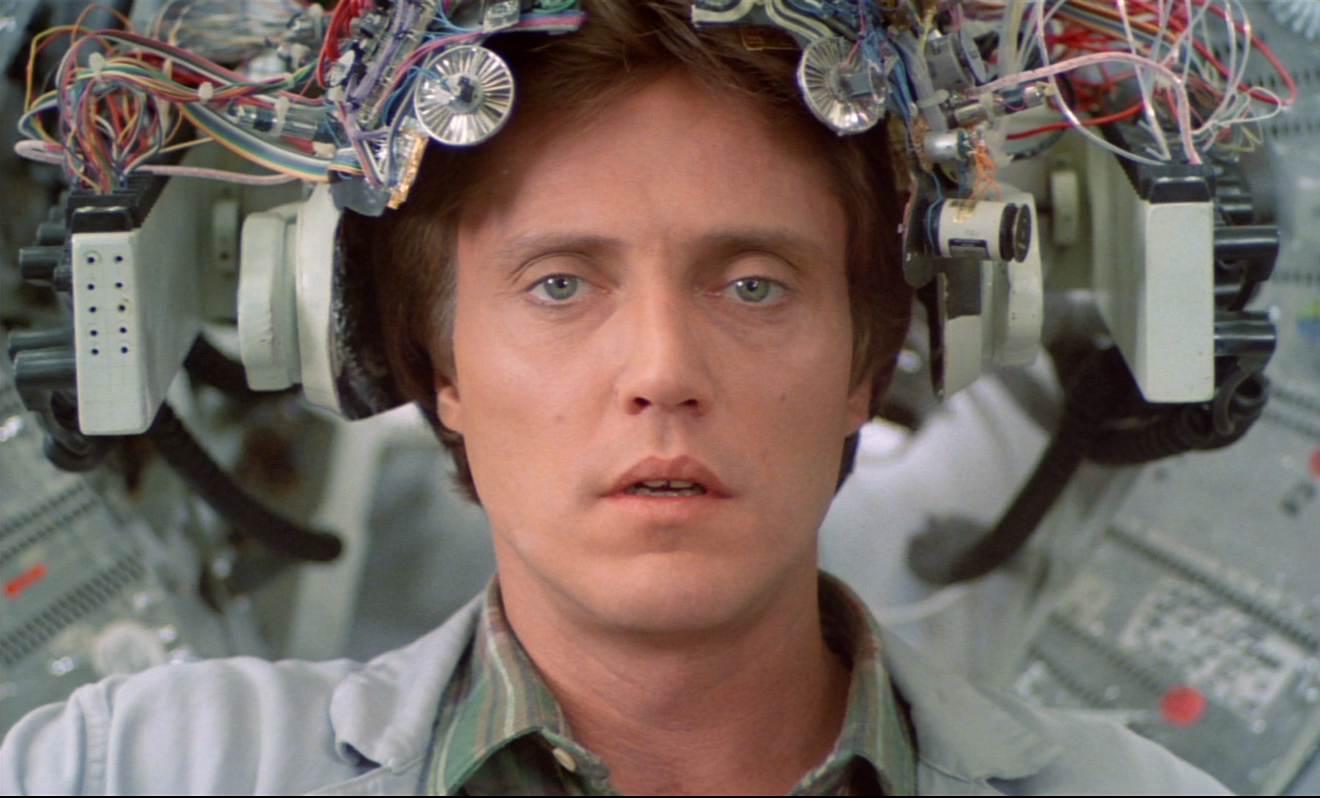“A major innovation in filmmaking will come to cinemas by the end of this summer,” promised the news anchor. “It requires gigantic screens and superb sound,” and its creator Douglas Trumbull he added, says it’ll have “a heightened sense of reality, that’s something like Cinerama; only better”.
The bold claim was made in the introduction to an NBC news report from 1984 about Showscan, Trumbull’s new process using 70mm film photographed and projected at two and a half times the standard speed of cinema film, for an immersive experience. He told NBC News:
“We did some experiments and we ended up with a system which photographs and projects at 60 frames per second on a very, very large screen. And very, very bright. It’s about four times larger than a regular movie, four times brighter than a regular movie. The sound system is much higher quality, the lenses are much higher quality. And the total of information that’s coming at your nervous system in the theatre is more than ten times what you see in a regular movie theatre.”
Trumbull’s feature film Brainstorm had opened the previous year and he’d originally planned to make it in Showscan. The film is about the idea of immersive visual technology that can record and replay memory into other minds.

Trumbull’s fascination with turning cinema into as real an experience as possible had been with him his whole life. His engineer father had worked on The Wizard of Oz (1939), a film whose analogue fantasy effects still captivate audiences. Trumbull was an engineer too—a man used to turning dreams into reality through technology and not afraid to discuss how the magic happened. He specialised in epic, spiritual awe in films such as Star Trek: The Motion Picture (1979), invented the effects for the magnificent immersive Stargate sequence in 2001: A Space Odyssey (1968) and did wonderful pre-show presentations at screenings for both 2001 and his eco-space odyssey Silent Running (1972), explaining how he achieved them.
The plot of Brainstorm dealt with bold scientific and ethical ideas about experience and memory. Natalie Wood and co-star Christopher Walken played scientists battling their fears (and the industrial military complex) in pursuit of scientific truth when they invent their memory machine. The idea of capturing the moment of death and what happens to the mind after is the heart of the film and when Wood died suddenly in a boating accident during filming, the film and reality became distressingly entangled.
The studio tried to shut down the production and cash in on the insurance. Trumbull had to fight hard to complete the film, even rewriting scenes and using a body double to deal with his star’s absence. It’s said that the experience ended his Hollywood directing career. When I interviewed him in 2010, we talked off camera about the film. He spoke with real sadness of how talented Wood was, the impact of studio pressure on the final movie, and the fact that her film was regarded with mawkish interest because of her death, rather than on its merits.
His website said of Brainstorm: “MGM was unwilling to make the film in Showscan, so a compromise was reached by using both 35mm and 65mm formats, alternating between mono and stereophonic sound. The story of Natalie Wood’s tragic death during production will never been fully known, and the challenge of completing the film against the will of MGM was one of Douglas Trumbull’s greatest triumphs, while also revealing to him the worst of Hollywood machinations.”
After Brainstorm, Trumbull worked hard to turn Showscan into a reality—a serious plan to transform the cinematic experience. He told NBC: “The films will be shorter. Very high impact. Everything you’d expect to see in a feature film but compressed in time.” Despite plans to pilot these 22-minute films in cinemas, the fruit of Showscan survived in only one place—the four-minute 11-second IMAX film that Trumbull made for the Back To The Future: The Ride immersive experience at Universal Studios in Florida, which ran from 1993 till 2007. Much loved by theme park visitors, it was projected in a format known as Omnimax.
Trumbull was always a dreamer and a practical engineer trying to make the world a better place. In 2010 after the Gulf of Mexico oil disaster, he posted a solution to cap the leaking oil well and a prototype model of a device in a film on his website.
The quest for the ultimate immersive VR continues, often focused on video gaming, but remains strangely elusive, as various formats rise and fall. But there is something pure in Trumbull’s dream of a heightened cinematic experience. And in Brainstorm we see that dream, punctured by real-world tragedy and the short-sightedness of the Hollywood studio system.